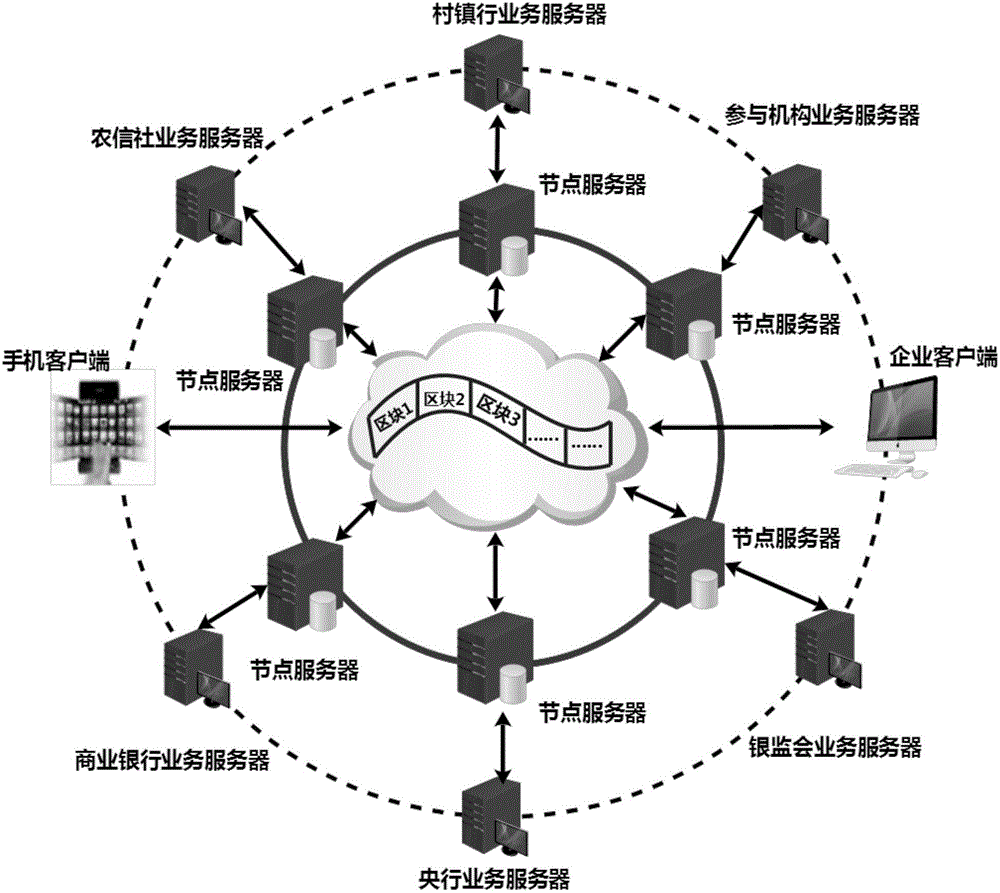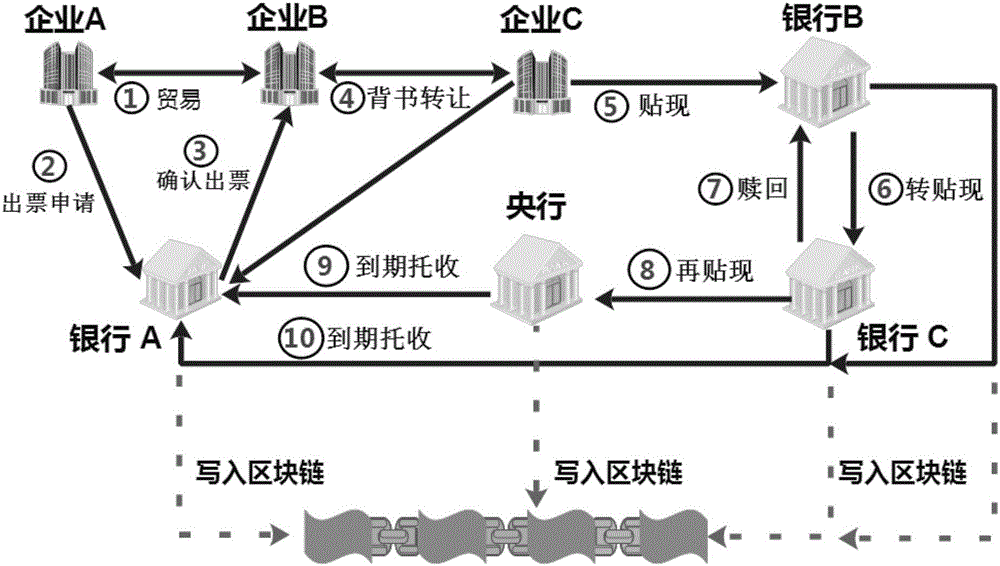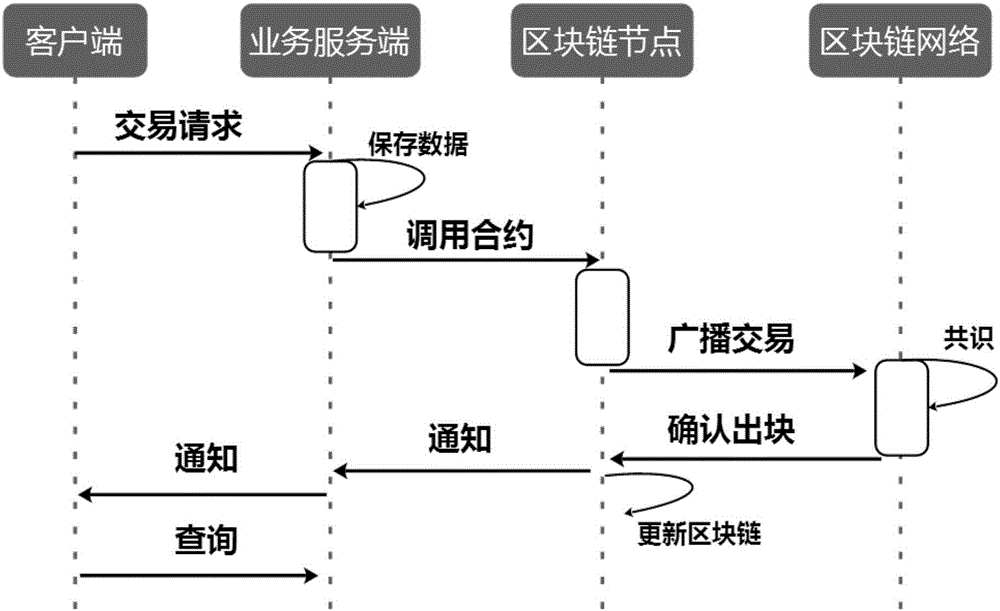Consortium chain-based digital bill trading system construction method
A technology of transaction system and construction method, applied in the field of construction of digital bill transaction system based on alliance chain, can solve the problems of cumbersome reconciliation work, high operation and optimization cost, low system security and reliability, etc., to prevent moral hazard. and operational risks, avoiding repeated pledges or partnering crimes, and improving reliability and security
- Summary
- Abstract
- Description
- Claims
- Application Information
AI Technical Summary
Problems solved by technology
Method used
Image
Examples
Embodiment Construction
[0041] In order to describe the present invention more specifically, the technical solutions of the present invention will be described in detail below in conjunction with the accompanying drawings and specific embodiments.
[0042]The present invention proposes a digital bill transaction system based on the alliance chain. The system uses the alliance chain as a technical support, and combines the existing bill attributes, regulations and markets to develop a brand-new bill presentation form——digital bills. Compared with the existing electronic bills, it is completely different in technical architecture. It not only has all the functions and advantages of electronic bills, but also integrates the advantages of blockchain technology. It is a safer, smarter, more convenient and more promising form of bills. The specific construction method of the system is as follows:
[0043] (1) Establish a bill blockchain alliance.
[0044] Such as figure 1 As shown in the figure, the par...
PUM
 Login to View More
Login to View More Abstract
Description
Claims
Application Information
 Login to View More
Login to View More - R&D
- Intellectual Property
- Life Sciences
- Materials
- Tech Scout
- Unparalleled Data Quality
- Higher Quality Content
- 60% Fewer Hallucinations
Browse by: Latest US Patents, China's latest patents, Technical Efficacy Thesaurus, Application Domain, Technology Topic, Popular Technical Reports.
© 2025 PatSnap. All rights reserved.Legal|Privacy policy|Modern Slavery Act Transparency Statement|Sitemap|About US| Contact US: help@patsnap.com



